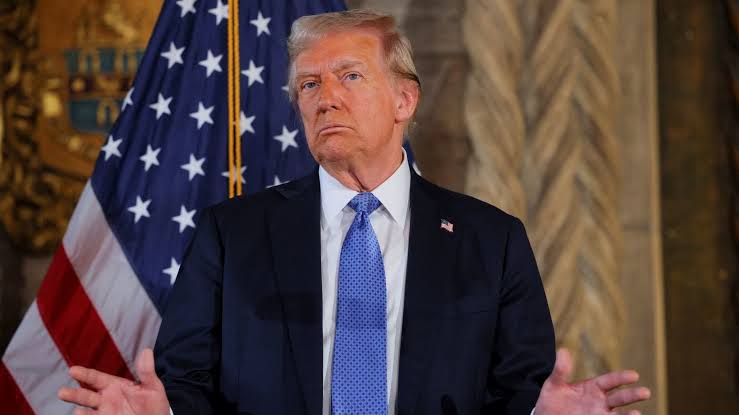President Donald Trump has announced plans to impose a 25% import tax on all steel and aluminum entering the United States, a decision that is expected to significantly affect Canada.
Additionally, Trump indicated that he would reveal details later in the week regarding reciprocal tariffs on countries that impose taxes on U.S. imports, although he did not clarify which nations would be affected or if any exemptions would apply. “If they charge us, we charge them,” he stated.
While en route from his Mar-a-Lago resort in Florida to the Super Bowl in New Orleans on Sunday, Trump shared his intentions with reporters.
Canada and Mexico rank among the largest steel trading partners of the U.S., with Canada being the primary supplier of aluminum to the country. During his first term, Trump implemented tariffs of 25% on steel and 10% on aluminum imports from Canada, Mexico, and the European Union. However, a year later, the U.S. reached an agreement with Canada and Mexico to lift those tariffs, while the EU’s import taxes remained until 2021.
Speaking from Air Force One, Trump reiterated his commitment to impose tariffs on “everybody” for steel and aluminum. “Any steel coming into the United States is going to have a 25% tariff,” he declared.
In reaction, Ontario Premier Doug Ford criticized Trump for “shifting goalposts and constant chaos, putting our economy at risk” in a social media post, noting that Canada’s steel production is largely based in Ontario. Trump’s remarks also led to a decline in the stock prices of major South Korean steel and automotive manufacturers, as South Korea is a significant steel exporter to the U.S.
Meanwhile, Australian Prime Minister Anthony Albanese informed parliament that his government would advocate for an exemption from any steel and aluminum tariffs, similar to the arrangement during Trump’s first term. Albanese also mentioned a scheduled meeting with the U.S. president. Following Trump’s announcement, shares of Australia’s largest steel producer, BlueScope, rose approximately 1.6%, as the company has a notable operation in Ohio with its North Star Mill.
Read more: China’s tit-for-tat tariffs on US take effect
Tariffs play a pivotal role in Trump’s economic strategy, as he views them as a means to stimulate the US economy, safeguard jobs, and increase tax revenue. Earlier this month, he threatened to implement a 25% import duty on products from Canada and Mexico but subsequently postponed this action for 30 days after discussions with the leaders of both nations. Additionally, he introduced a 10% tariff on all Chinese imports, prompting Beijing to respond with its own tariffs that took effect on Monday.
Trump indicated that he would unveil further retaliatory tariffs on “Tuesday or Wednesday,” which would be implemented “almost immediately” following the announcement. He stated, “Those who are taking advantage of the United States will face reciprocal tariffs. This will benefit everyone, including other nations.”
During his visit to New Orleans, Trump signed a proclamation declaring February 9 as “Gulf of America” day to commemorate his directive to rename the Gulf of Mexico, as his aircraft traversed the area. Mexico contends that the US lacks the legal authority to alter the Gulf’s name, citing UN regulations that limit a country’s sovereign territory to 12 nautical miles from its coastline.
When questioned about his communications with Russian President Vladimir Putin, Trump responded, “I prefer not to discuss it, and if we are in talks, I won’t disclose details prematurely, but I believe we are making progress.” He added, “I anticipate meeting with Putin at the appropriate time.”
Trump also reiterated his controversial assertions that the US could annex Canada and the Gaza Strip, suggesting that Canada would be better off as the “51st state” and expressing his “commitment to buying and owning Gaza.”





